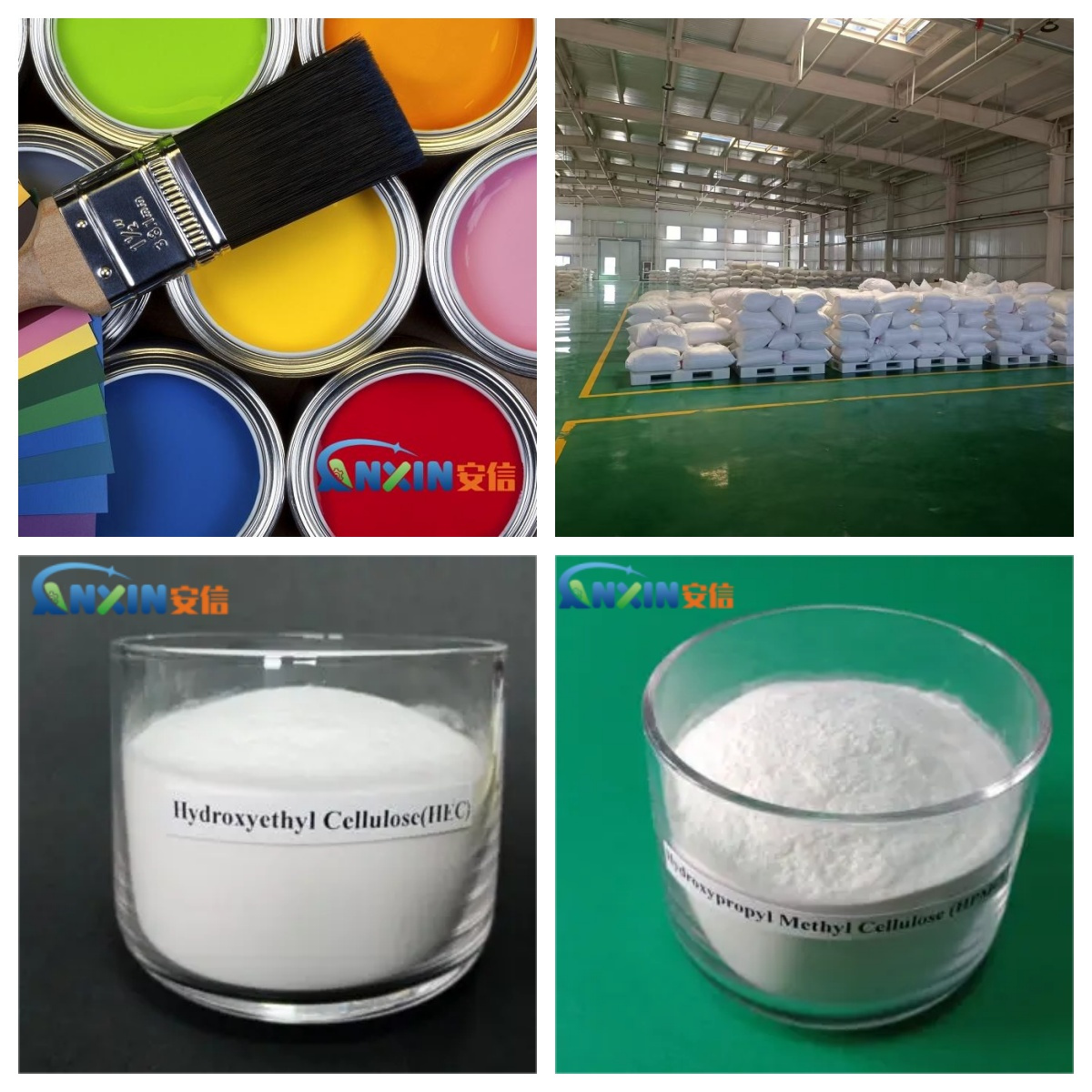In the modern coating industry, in order to improve the rheological properties, storage stability and construction performance of the coating, it is often necessary to add some functional polymer additives. Among them, hydroxyethyl cellulose (HEC) and hydroxypropyl methylcellulose (HPMC) are two widely used cellulose ether thickeners and stabilizers. Although they are both non-ionic cellulose ethers, there are obvious differences in chemical structure, performance characteristics and application effects in coatings.

1. Chemical structure and solubility
HEC is a water-soluble non-ionic polymer made from natural cellulose by introducing hydroxyethyl groups through etherification reaction. Its molecular structure is rich in hydrophilic hydroxyl and hydroxyethyl groups, which makes it have good water solubility. HEC can dissolve quickly in cold water to form a transparent viscous solution.
HPMC is a polymer formed by introducing hydroxypropyl and methyl substituents on cellulose molecules. Due to the presence of its hydrophobic methyl group, it has better surface activity and film-forming properties than HEC. HPMC swells slowly in cold water, takes a certain amount of time to completely dissolve, and is greatly affected by temperature.
2. Comparison of rheological properties
HEC has a relatively linear rheological behavior, showing pseudoplasticity, that is, shear-thinning characteristics, and is suitable for coating systems that require good leveling. The viscosity of HEC solution decreases under high shear, which helps with brushing, roller coating and leveling during construction.
HPMC solution shows stronger pseudoplastic behavior, with higher viscosity under low shear, which helps prevent sedimentation and sagging; the viscosity decreases significantly under high shear, which is conducive to improving construction. Therefore, HPMC performs better in facade coating applications that require strong anti-sagging properties.
3. Water retention and construction performance
HPMC has better water retention than HEC, especially in dry environments or high temperature conditions, HPMC can effectively delay water evaporation and prevent cracking or shrinkage of the coating film. This makes HPMC also widely used in putty, gypsum and cement-based coatings, especially suitable for painting operations in summer or dry climates.
Although HEC also has a certain water retention function, the effect is slightly inferior to HPMC, especially in high temperature and high wind speed environment. Its insufficient water retention may cause too fast drying after construction, thus affecting the density and flatness of the coating.
4. Enzyme resistance and biodegradability
HEC has a high content of hydroxyethyl groups in its structure and is relatively easy to be degraded by microorganisms. Therefore, its enzyme resistance is poor, especially when stored for a long time, it may cause deterioration, and preservatives need to be added to extend the storage period.
HPMC has better enzyme resistance than HEC and is more stable. It is particularly suitable for industrial coatings with high storage stability requirements.
5. Cost and market application
From a cost perspective, HEC is relatively low in price and suitable for large-scale, low-cost architectural coating products. Its good thickening effect and fluidity make it have a high market share in applications such as interior wall coatings and low-end latex paints.
Although HPMC is slightly more expensive, its excellent comprehensive performance makes it widely used in mid-to-high-end coating systems, especially in occasions with high requirements for construction performance, anti-sagging and water retention, such as exterior wall coatings, elastic coatings, and weather-resistant coatings.

6. Environment and safety
Both are non-ionic cellulose ethers, have good environmental compatibility and biodegradability, do not contain volatile organic compounds (VOCs), and are in line with the development trend of green and environmentally friendly coatings. However, during use, attention should still be paid to its dustiness and hygroscopicity, and necessary operational protection should be taken.
HEC and HPMC each have their own advantages in coating applications. HEC is more suitable for coating products that focus on cost control and have high requirements for construction fluidity; while HPMC is widely used in mid-to-high-end coatings with higher performance requirements due to its better water retention, anti-sagging and construction performance. In actual applications, HEC or HPMC should be reasonably selected based on factors such as the performance requirements of the coating formula, construction methods and climatic conditions, and can even be used in combination as needed to achieve better comprehensive performance.
Post time: May-27-2025